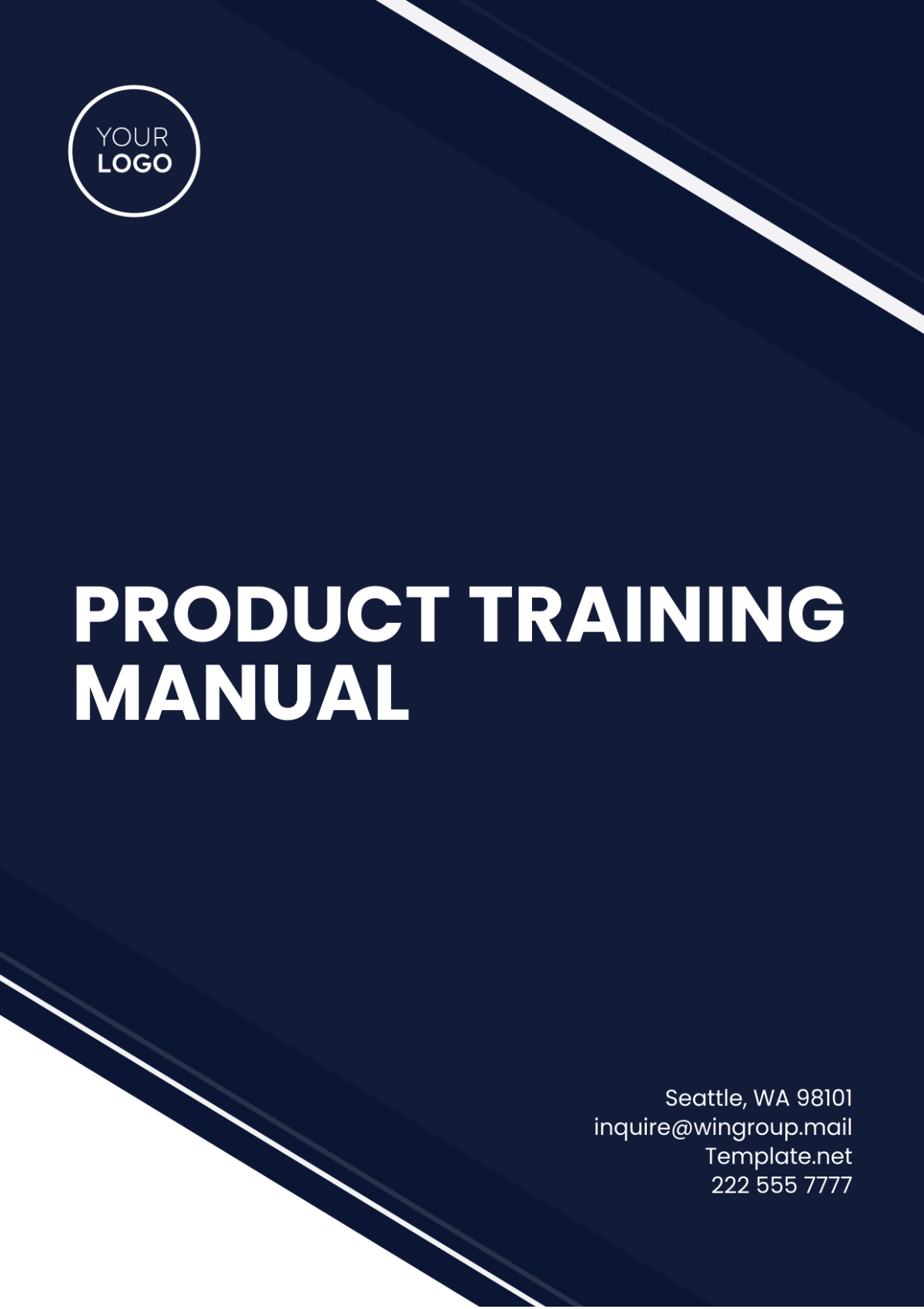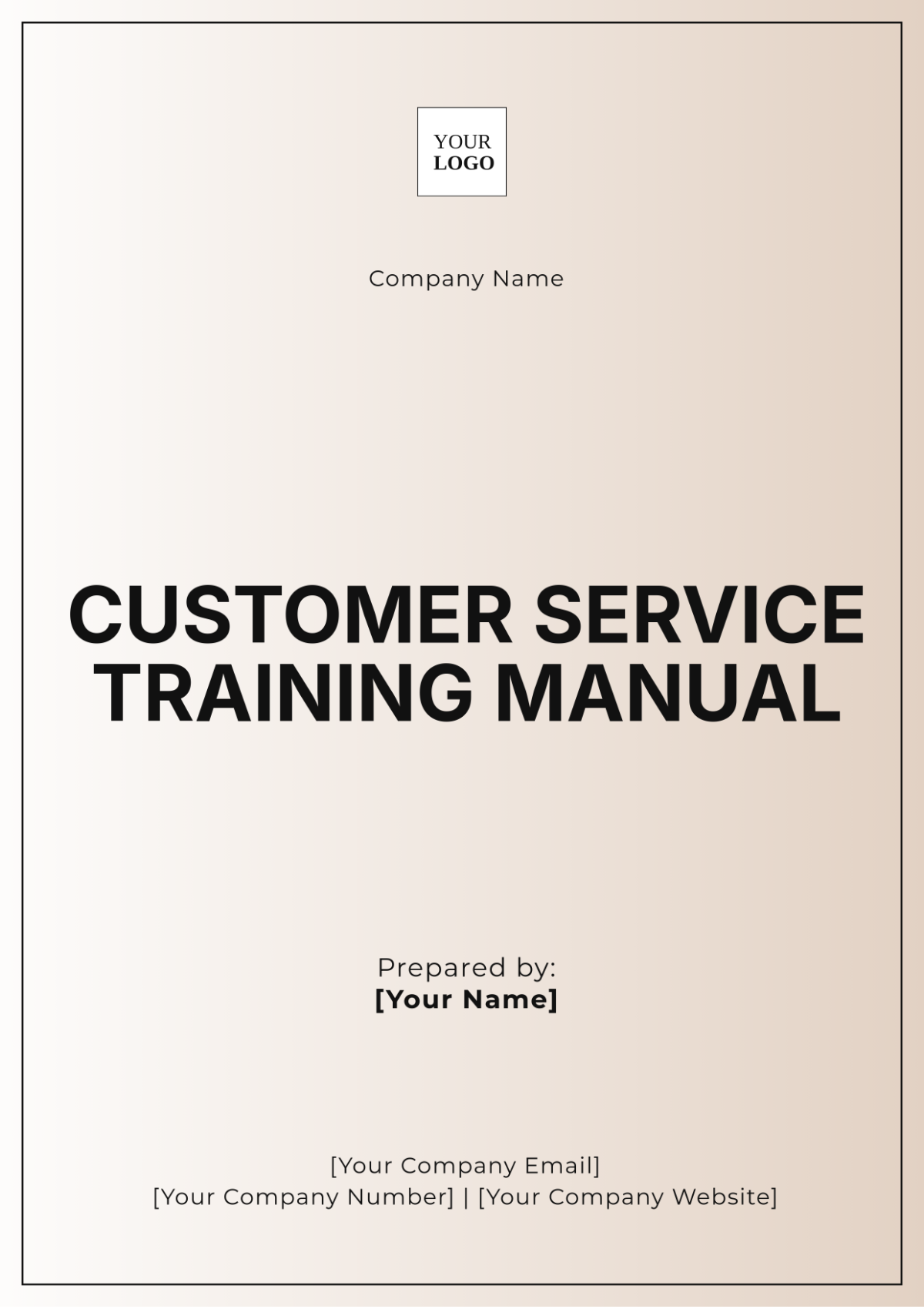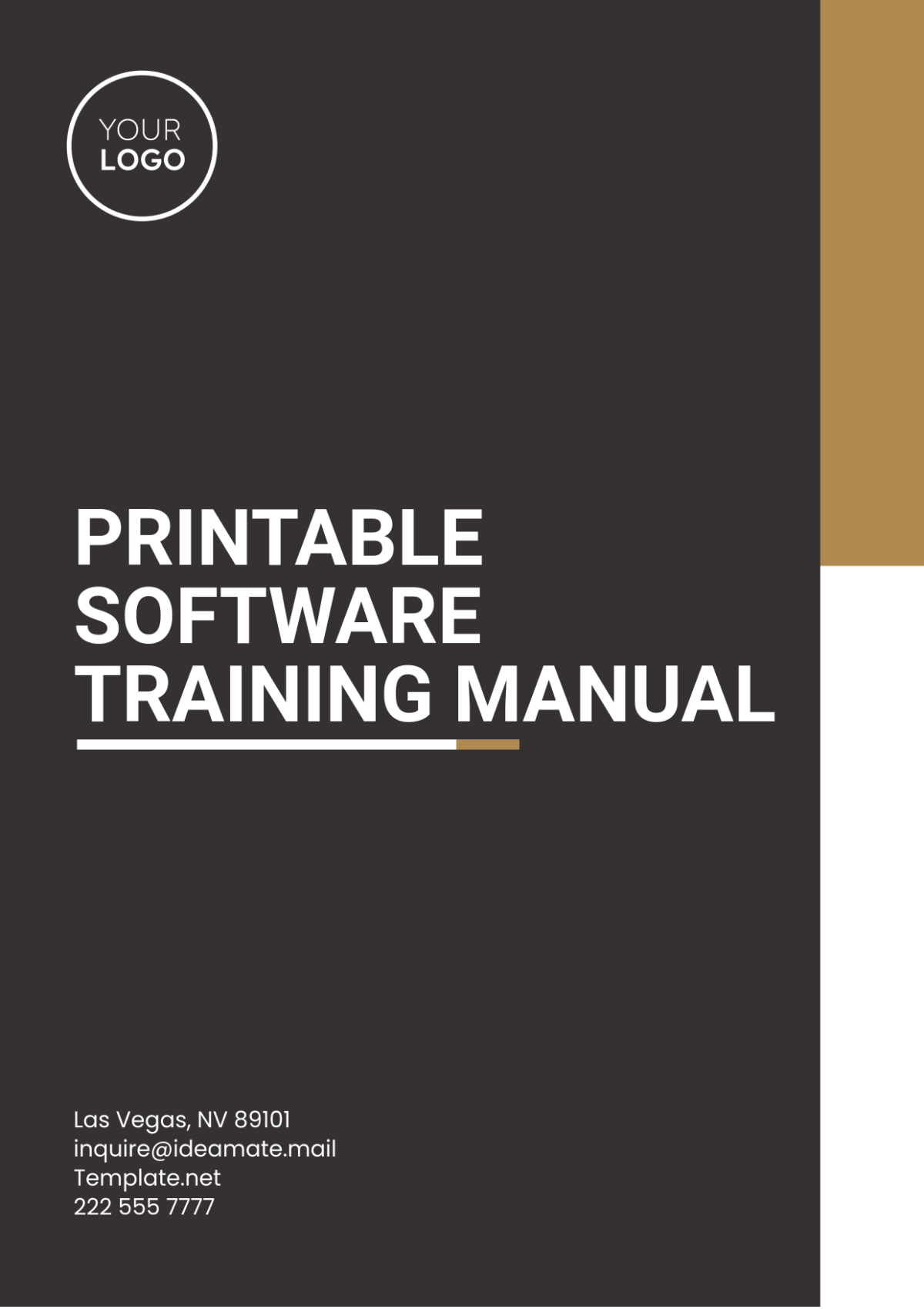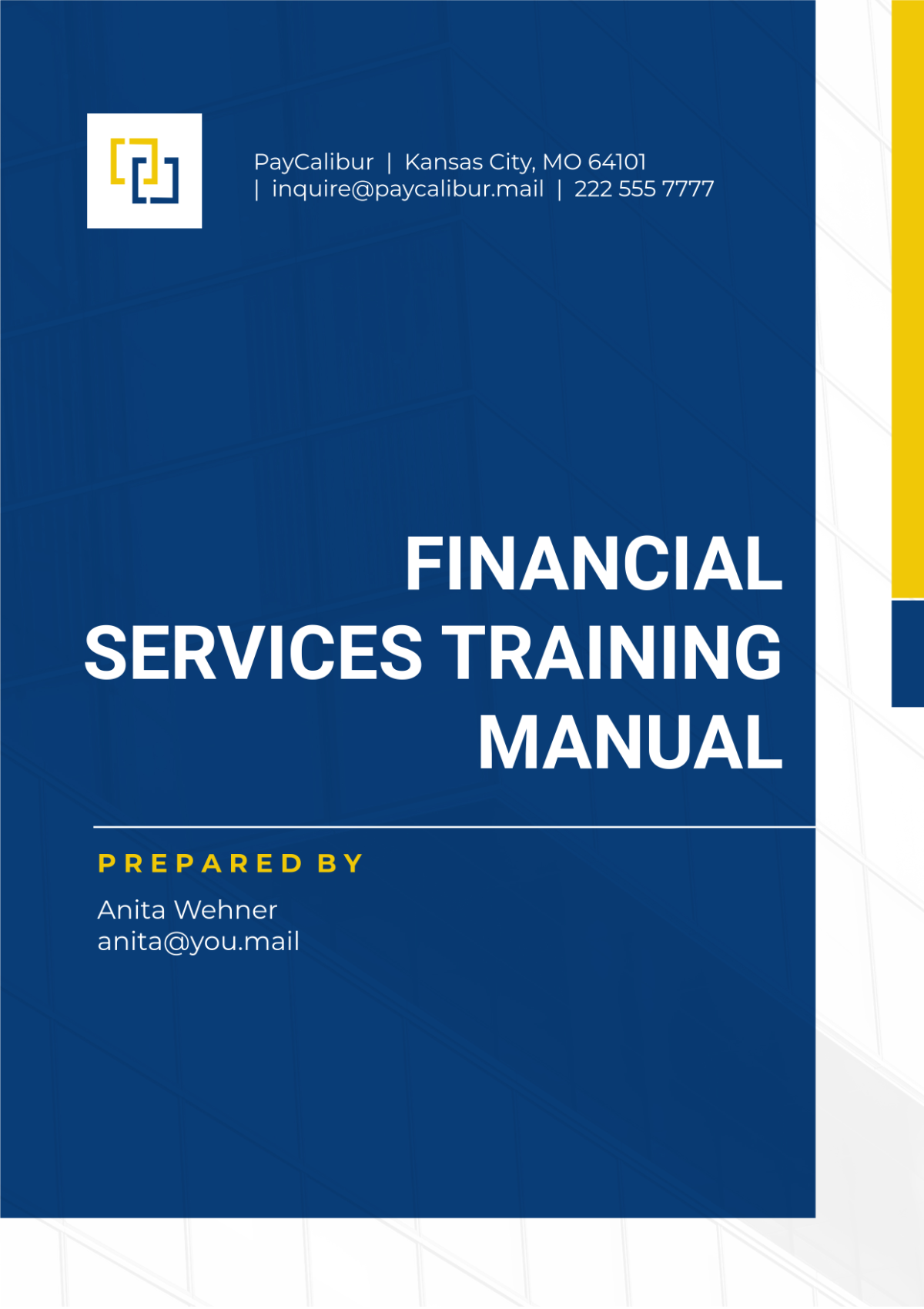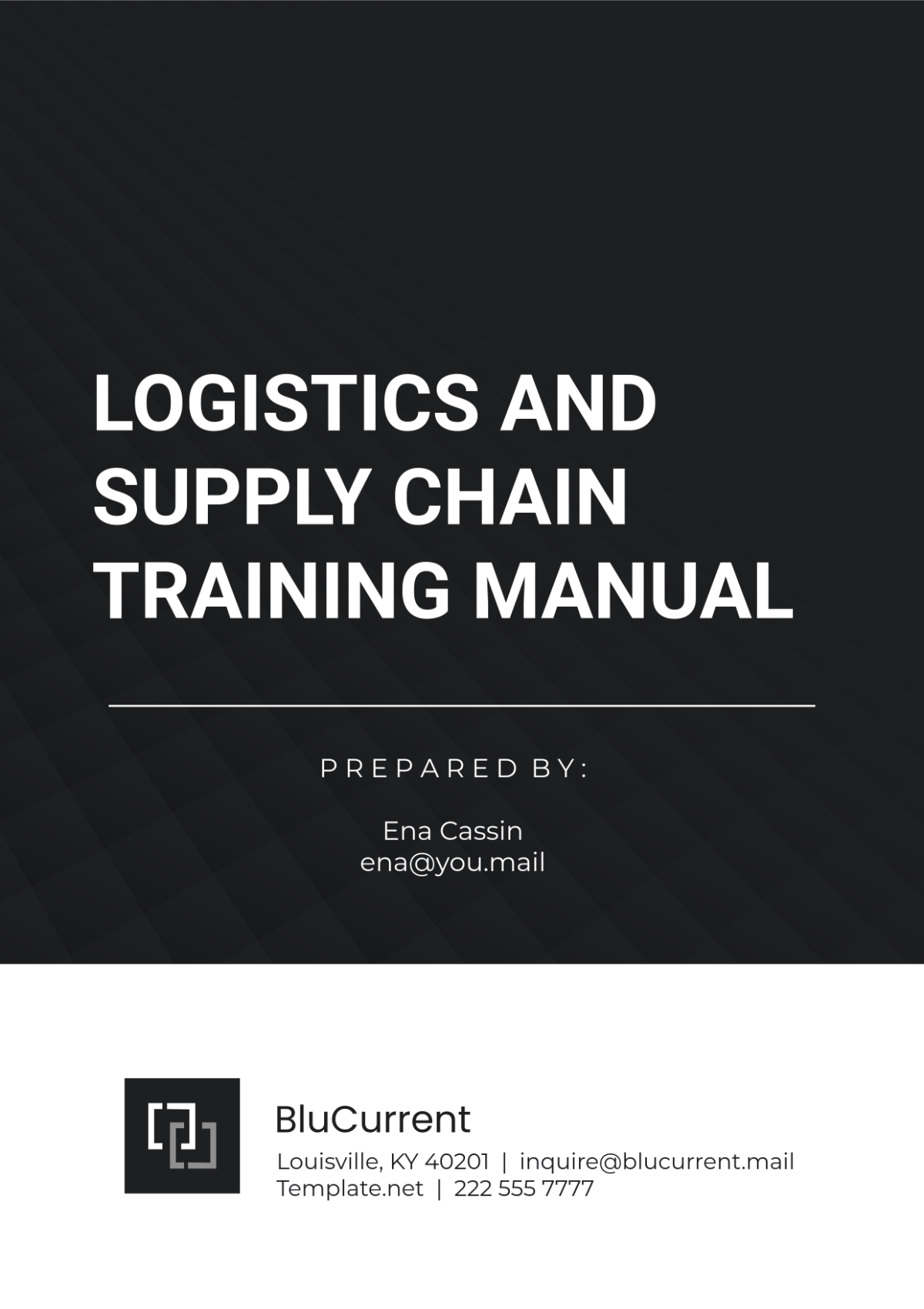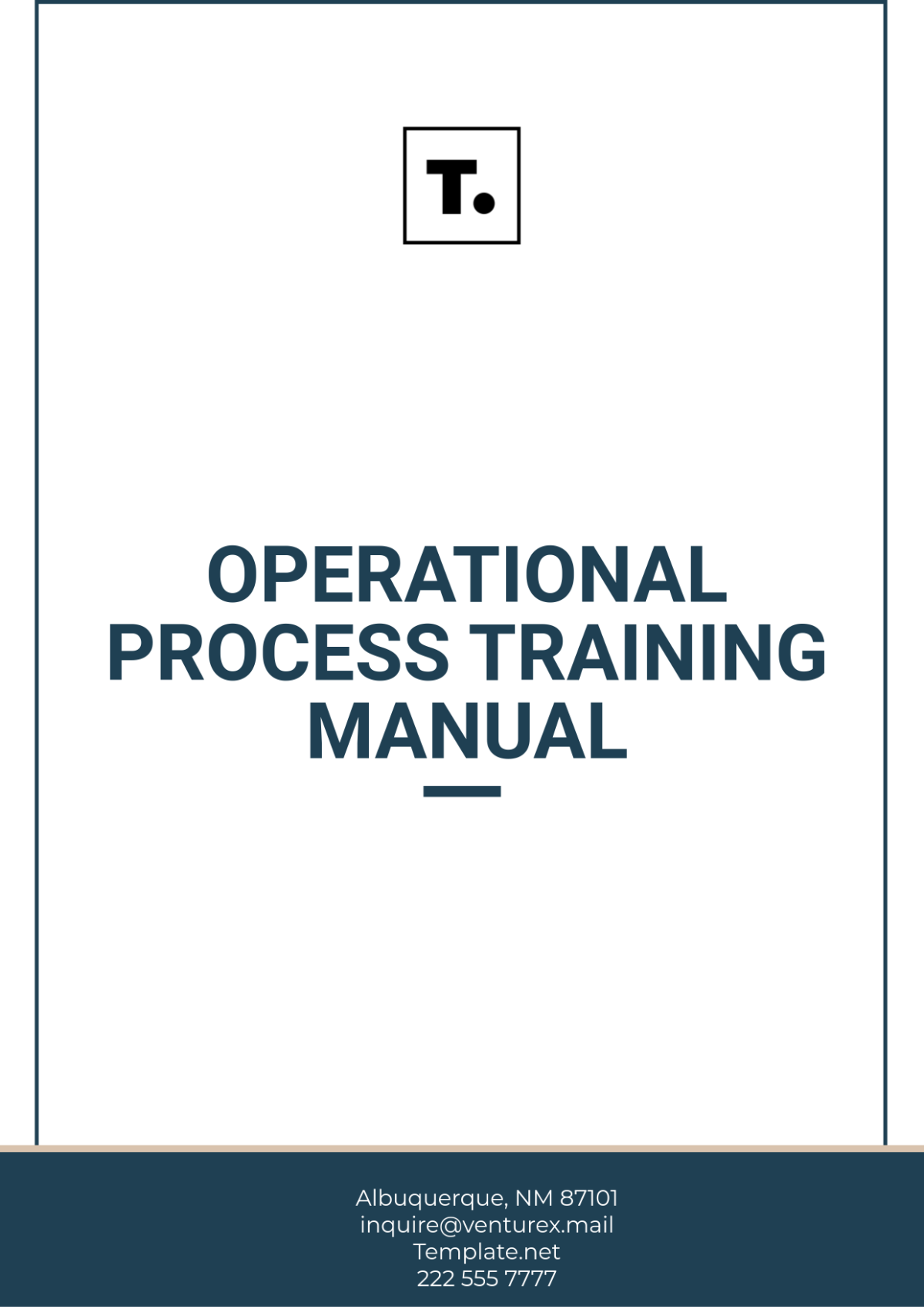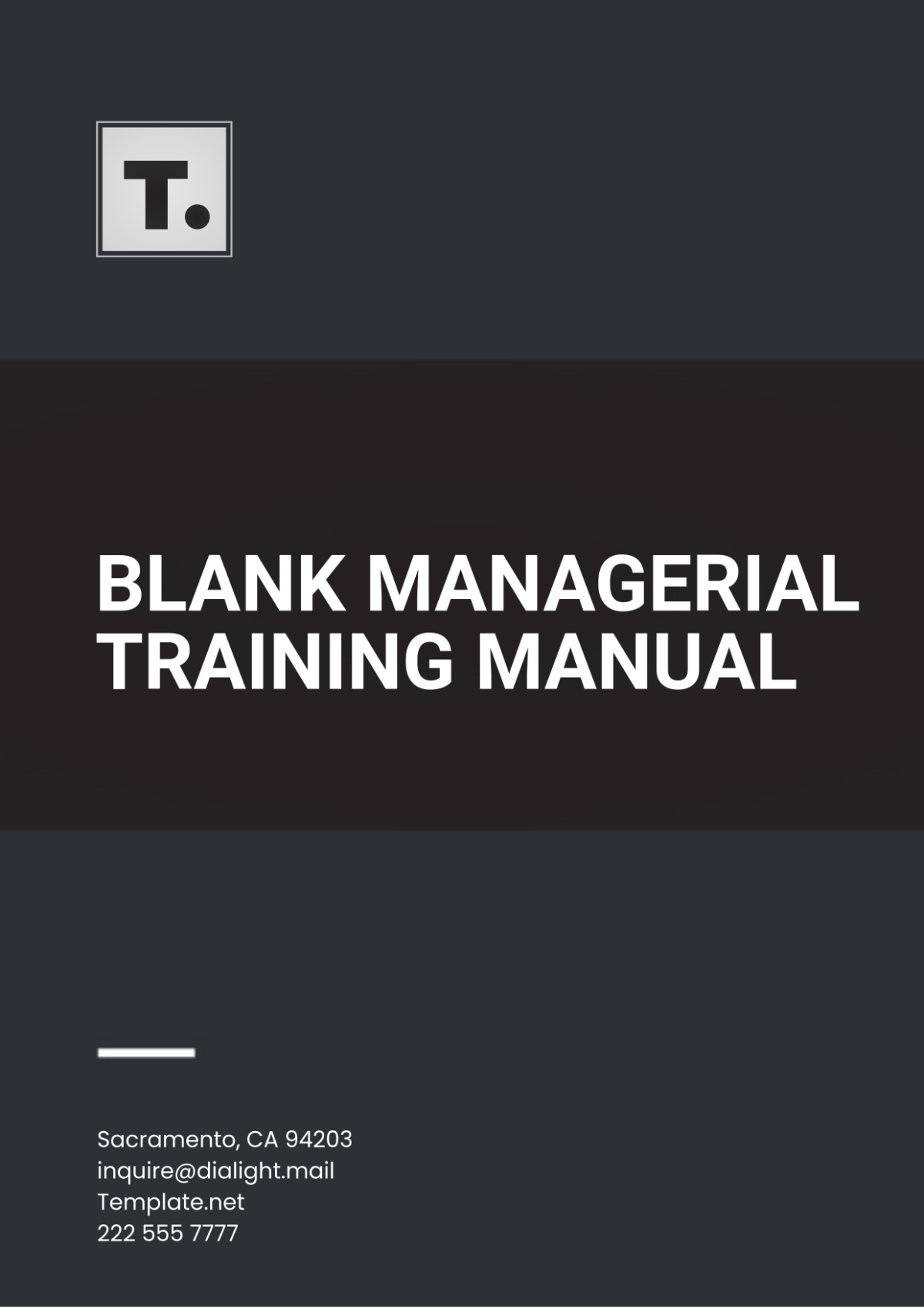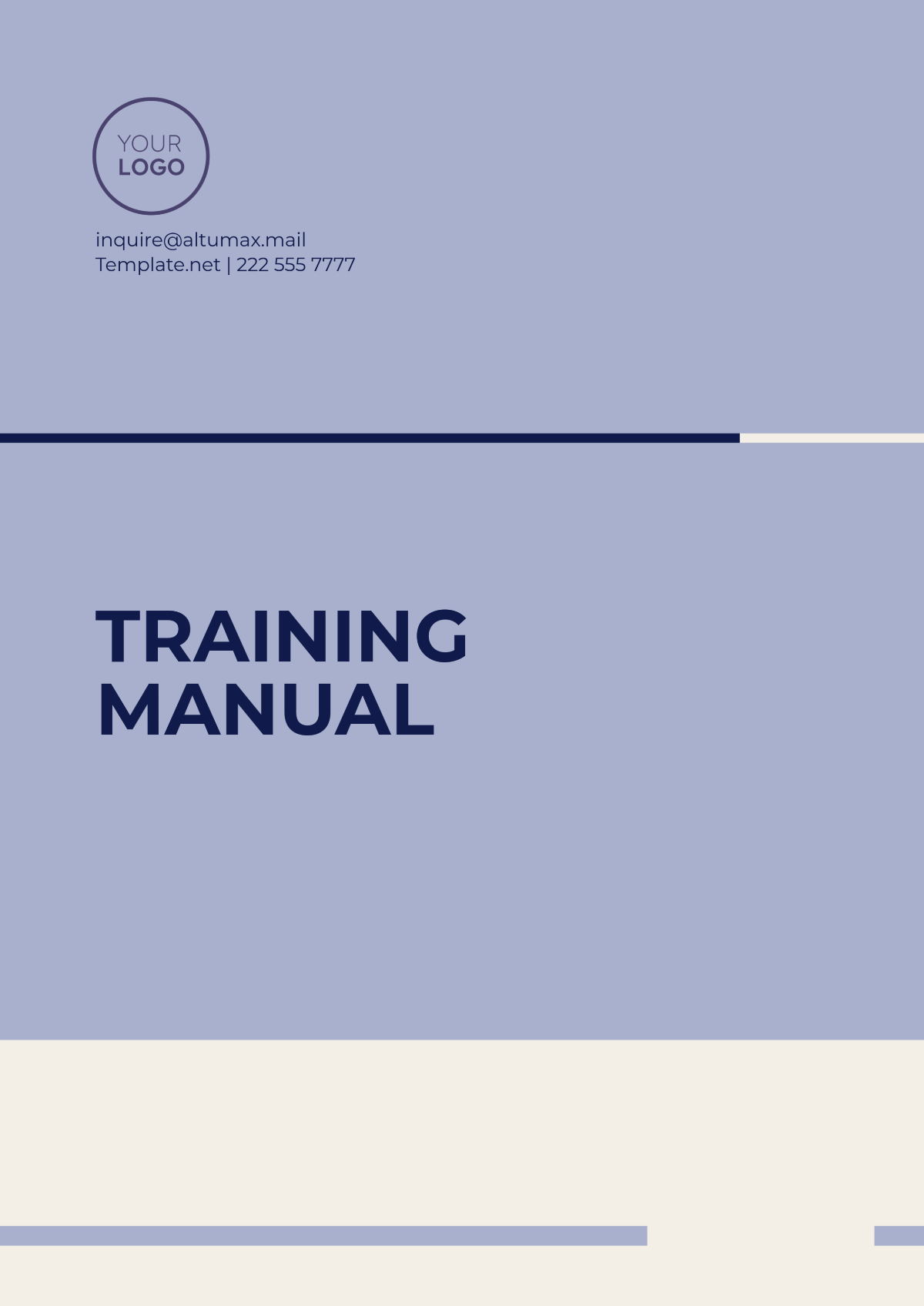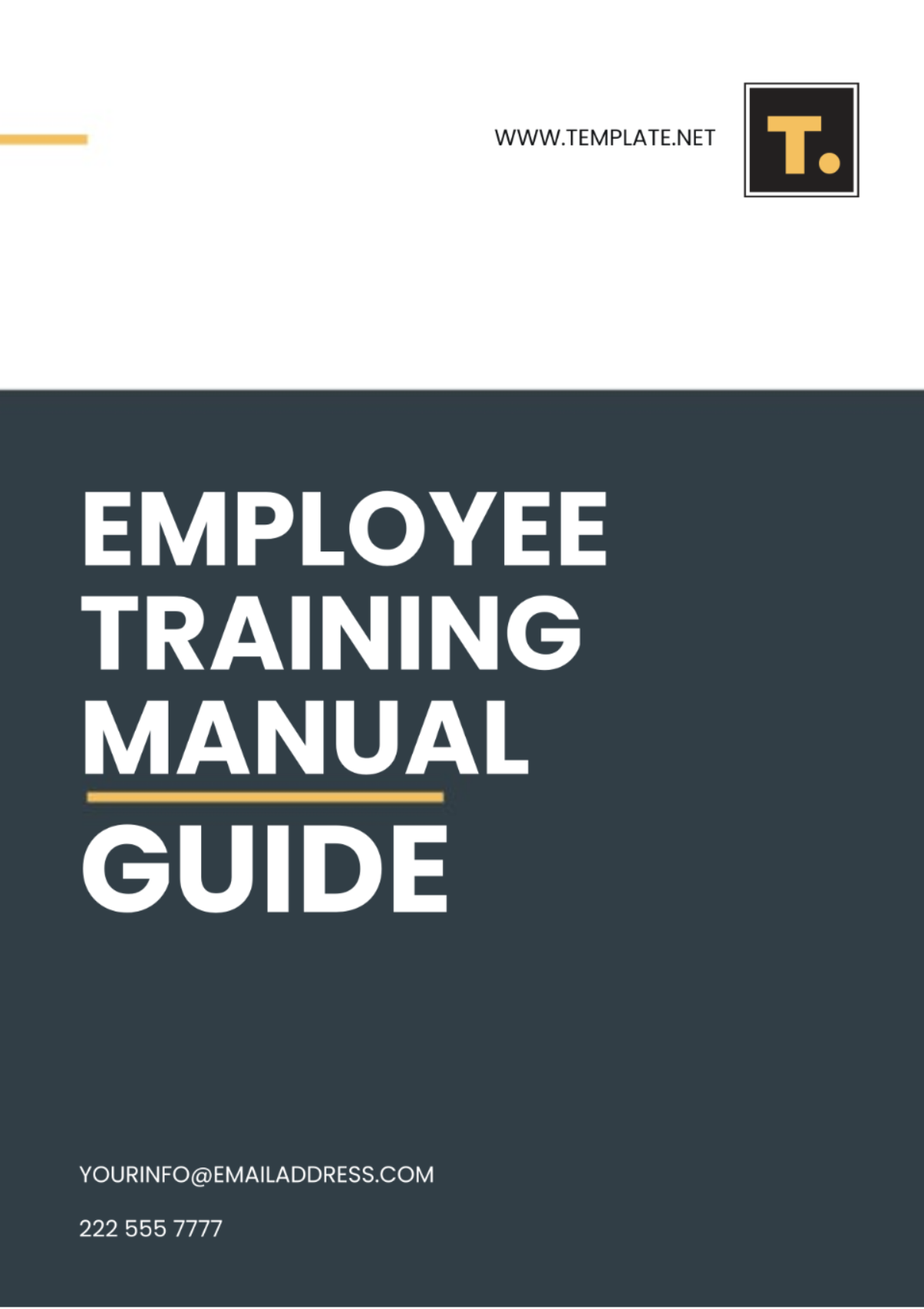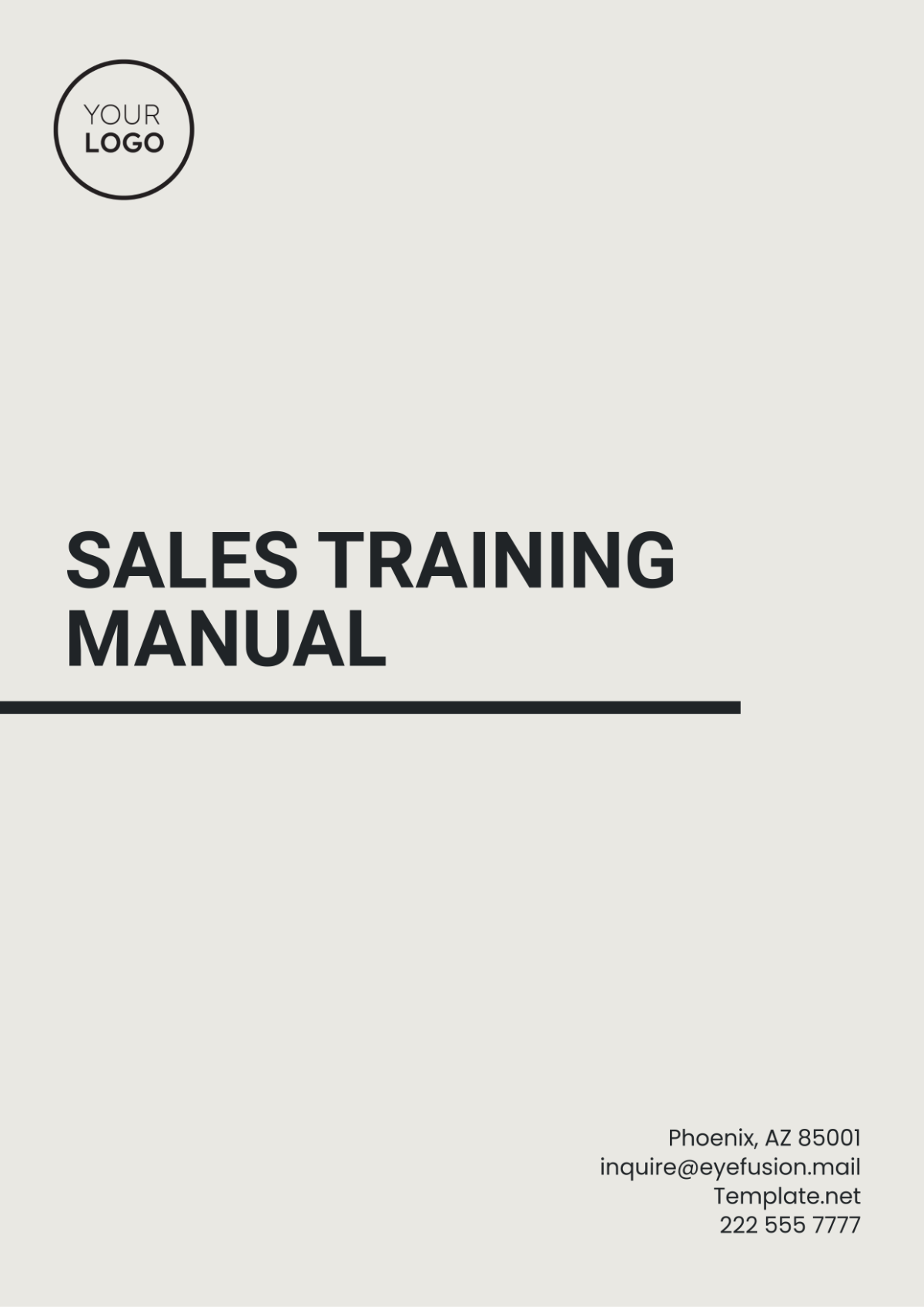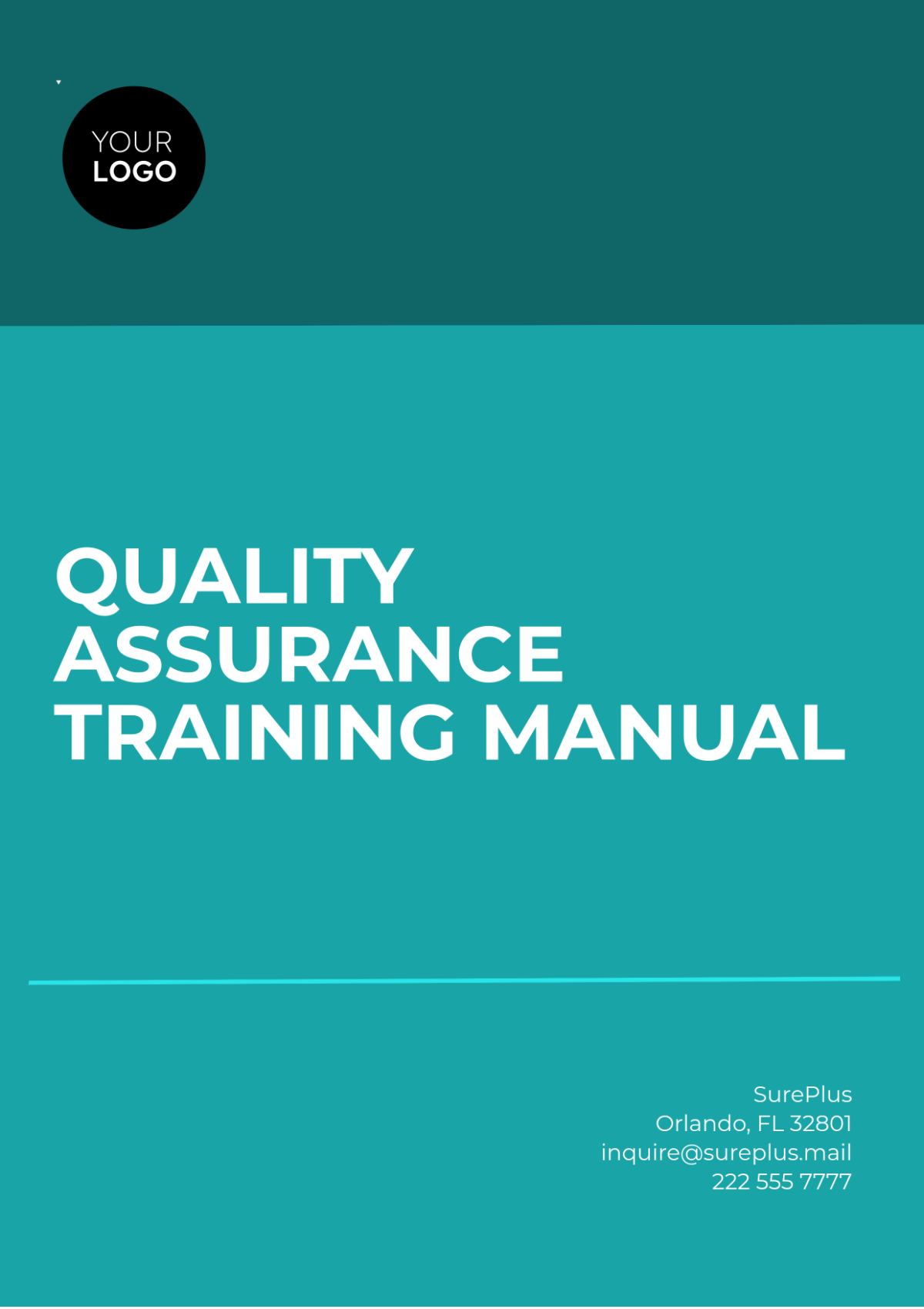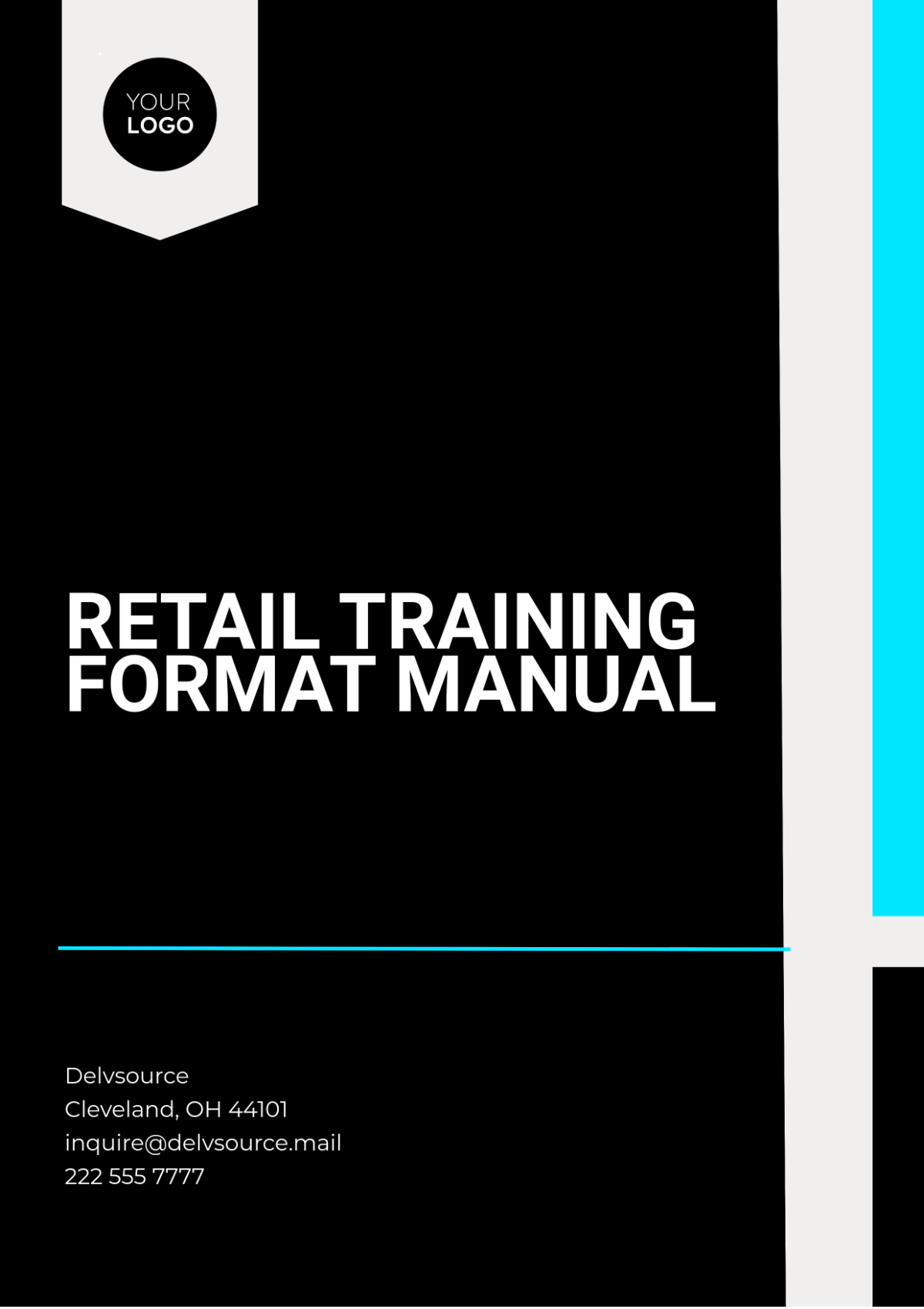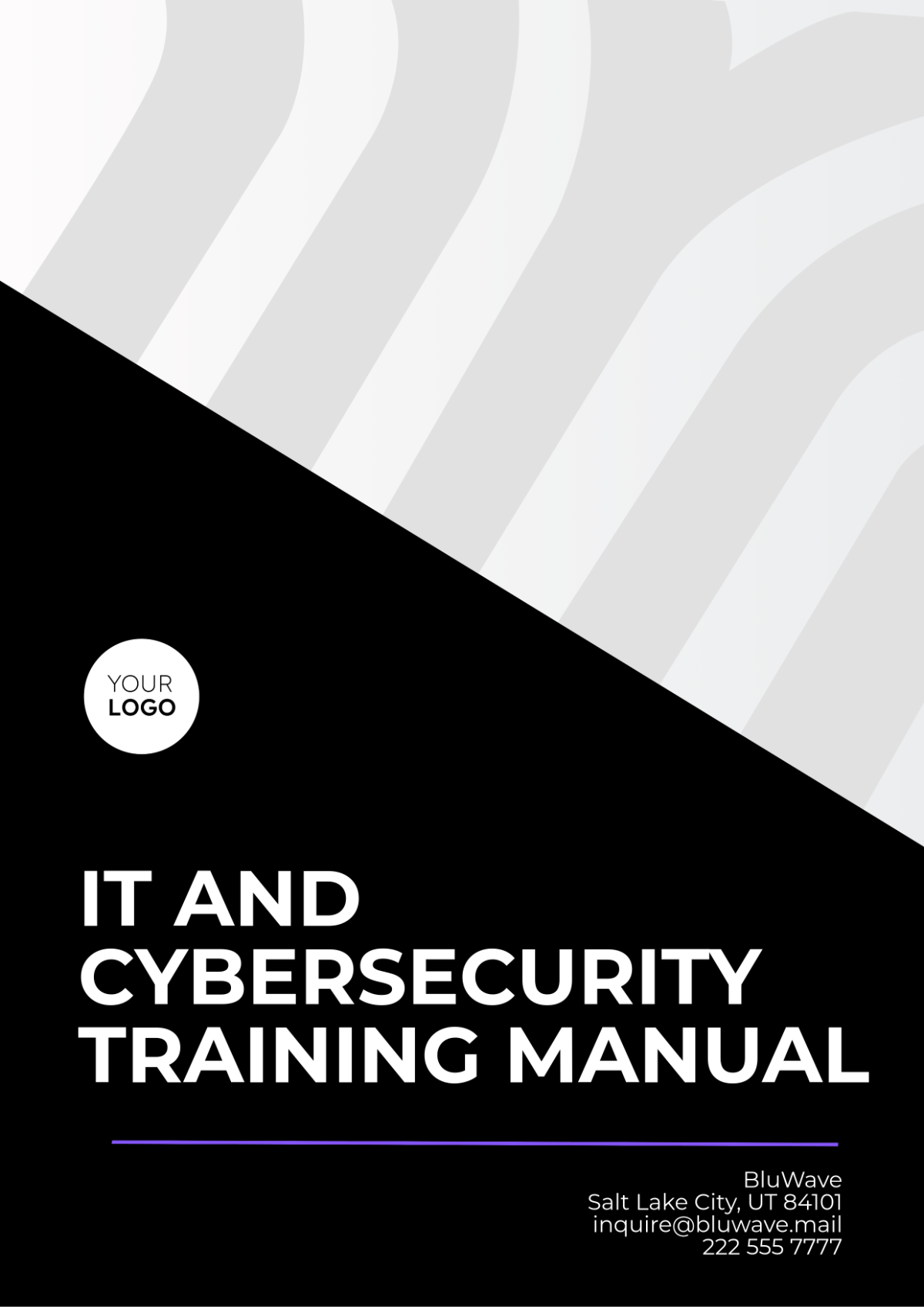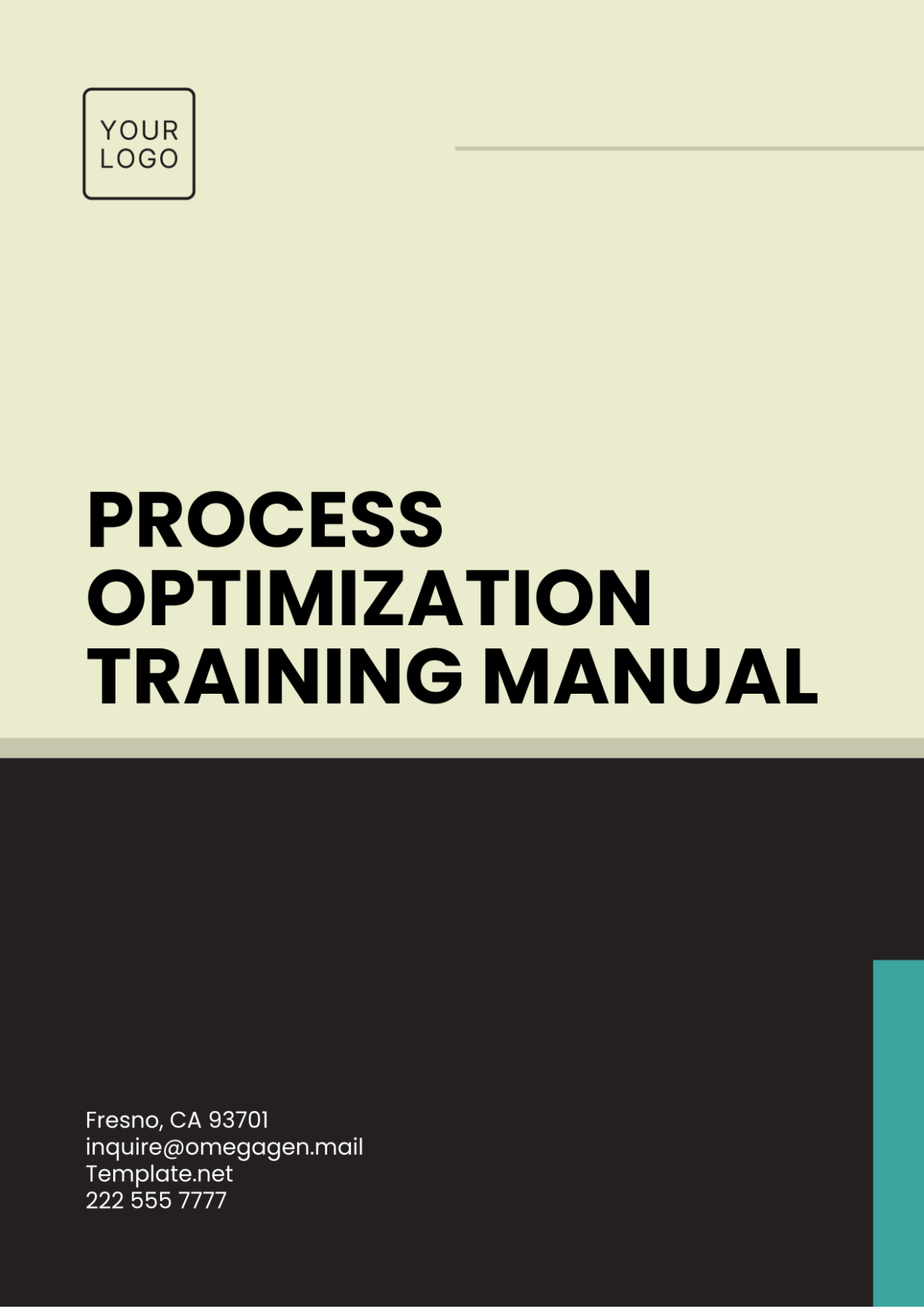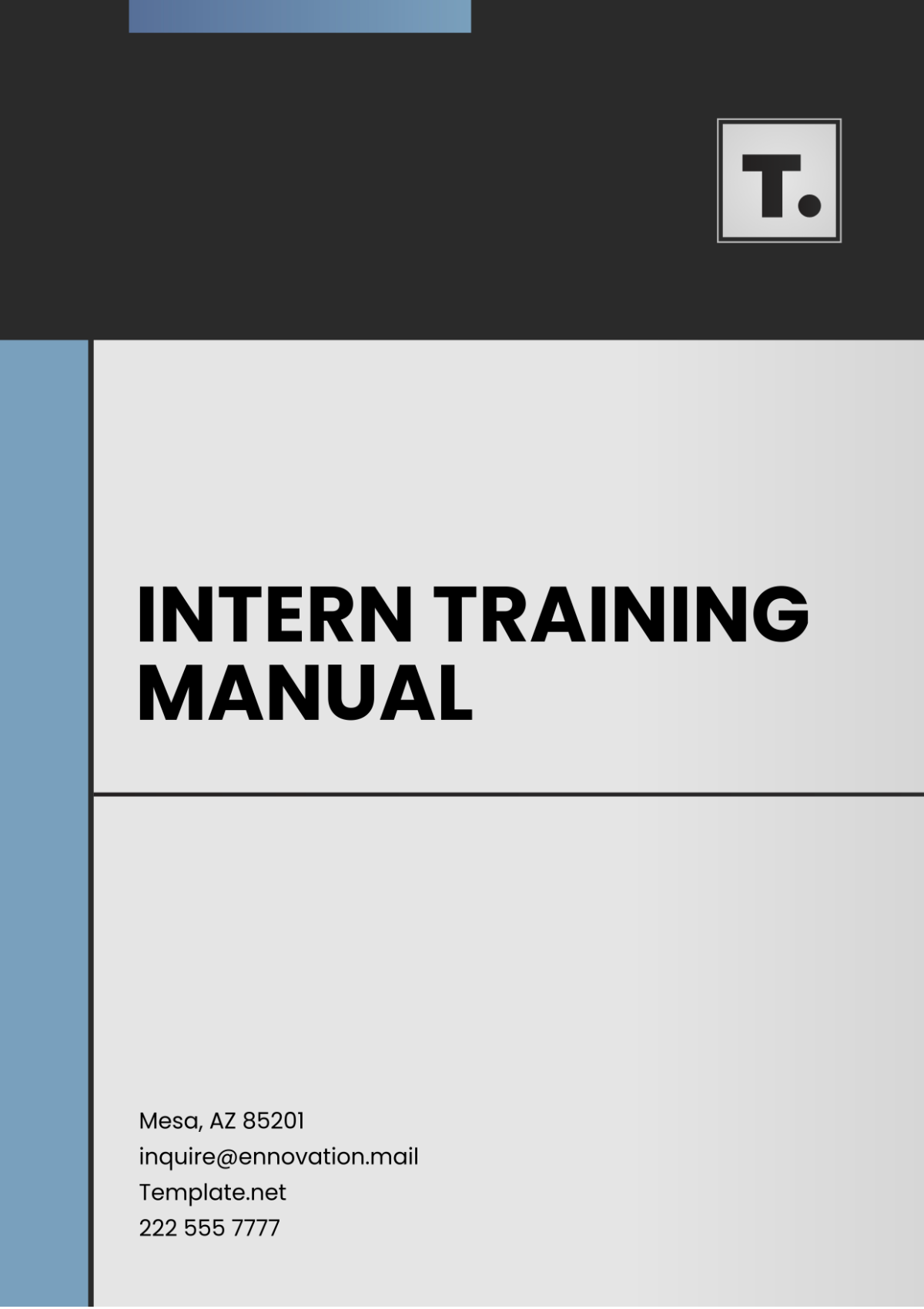GDPR and Data Protection Training Manual
Table of Contents
1. Introduction ....................................................................2
2. Objectives .........................................................................................................2
3. Scope ................................................................................................................3
4. Definitions .........................................................................................................3
5. GDPR Principles ................................................................................................4
5.1 Lawfulness, Fairness, and Transparency ..............................................................5
5.2 Data Minimization ...................................................................................................5
5.3 Data Accuracy .........................................................................................................5
6. Data Protection Laws and Regulations ............................................................5
6.1 GDPR .........................................................................................................................6
6.2 CCPA .........................................................................................................................6
6.3 PIPEDA ......................................................................................................................6
7. Roles and Responsibilities .......................................................................................6
8. Personal Data Processing .................................................................................7
9. Data Breaches ...................................................................................................8
10. Training and Awareness ..................................................................................8
11. Appendices ......................................................................................................9
Introduction
In today's digitally connected world, the protection of personal data is not just a legal obligation but also a crucial part of trust and reputation management. With an increasing volume of data being collected, stored, and processed, understanding how to handle this sensitive information responsibly is of the utmost importance. This GDPR and Data Protection Training Manual serves as an authoritative resource for all employees, contractors, and external partners associated with [Company Name].
Our primary objective is to offer comprehensive guidance on how to navigate the complex regulatory landscape of data protection laws, including the General Data Protection Regulation (GDPR) and other jurisdiction-specific legislation. This manual covers key principles such as data minimization, lawful processing, and data security, offering actionable insights for each principle. Operational guidelines are provided to clarify how these principles should be applied during the day-to-day handling, storage, and sharing of personal data.
By standardizing our approach to data protection, we aim to not only comply with legal mandates but also foster a culture of transparency and accountability within [Company Name]. This, in turn, will strengthen our relationships with customers, employees, and partners while mitigating risks related to data breaches and non-compliance.
Objectives
The objectives of this GDPR and Data Protection Training Manual are designed to create a robust framework that promotes responsible data management and legal compliance within [Company Name]. Below are the key objectives broken down into more specific aims and intentions:
Clarify Legal Requirements: The complex legal landscape surrounding GDPR and data protection can be intimidating for employees who are not well-versed in the subject. This manual seeks to break down these complexities into easily digestible information, so that staff members are fully aware of the legal requirements they must adhere to. We aim to demystify terms and processes, helping everyone to understand the 'why' and 'how' of GDPR compliance.
Standardize Processes: The absence of uniform procedures can lead to confusion and mistakes, putting our data and reputation at risk. One of the main objectives of this manual is to establish a standardized, company-wide approach to data handling, storage, and sharing. This will ensure that all departments are aligned in their data management activities, thereby reducing inefficiencies and enhancing the overall security posture of [Company Name].
Risk Mitigation: Non-compliance not only invites legal ramifications but also puts the company at a higher risk for data breaches. Therefore, this manual aims to serve as an educational tool that focuses on preventive measures. By helping staff recognize the common pitfalls and teaching them effective risk mitigation strategies, we aim to drastically reduce the likelihood of unauthorized data access, thereby preserving the integrity of both the data and the reputation of [Company Name].
Scope
The scope of this GDPR and Data Protection Training Manual extends to all individuals who interact with personal data under the purview of [Company Name]. This includes full-time employees, part-time staff, contractors, and even third-party service providers who have been entrusted with data processing responsibilities. Whether you are involved in collecting, storing, processing, or sharing personal data, the guidelines set forth in this manual are mandatory for you to follow. This comprehensive approach ensures that every touchpoint in our data processing chain is secure and compliant with GDPR and other relevant data protection laws. The goal is to create a cohesive, company-wide understanding and implementation of data protection measures.
Definitions
Understanding the terminologies used in data protection and GDPR is crucial for proper compliance. Below are key definitions that are pertinent to [Company Name]'s data protection strategy:
Data Subject
A Data Subject refers to any individual whose personal data is being processed by [Company Name]. This could include employees, customers, clients, or any other person who interacts with the company in a manner that leads to the collection of their personal information. Understanding the rights and responsibilities towards Data Subjects is essential in ensuring GDPR compliance and safeguarding individual privacy.
Data Controller
The Data Controller is the entity that sets the "how" and "why" of data processing, essentially controlling the purpose, conditions, and means by which personal data is handled. In the context of this manual, [Company Name] often serves as the Data Controller. As a Data Controller, [Company Name] bears a high level of responsibility, including ensuring that all data processing activities are compliant with applicable laws and that Data Subjects are informed of their rights.
Data Processor
A Data Processor is an organization or individual that carries out the actual processing of data on behalf of the Data Controller. While the Data Controller sets the policies and purposes of data use, it's the Data Processor's job to execute those directives. Data Processors could include third-party service providers like cloud storage services or payroll companies, and they are also obliged to adhere to data protection laws. Understanding the distinction between a Data Controller and a Data Processor is vital for clearly defining roles and responsibilities in the realm of data protection.
GDPR Principles
Understanding the foundational principles of the General Data Protection Regulation (GDPR) is crucial for any organization handling personal data. These principles guide not only legal compliance but also ethical data management practices. Below are some key GDPR principles that [Company Name] adheres to, along with explanations of how they are implemented within the organization.
5.1 Lawfulness, Fairness, and Transparency
One of the fundamental principles of GDPR is that all data processing activities must be conducted in a lawful, fair, and transparent manner. This means that [Company Name] is committed to ensuring that data subjects are fully informed about how their data is being used, stored, and shared. Transparency tools, such as clear privacy policies and consent forms, are implemented to ensure that data subjects are fully aware of the data processing activities.
5.2 Data Minimization
The principle of data minimization calls for organizations to collect only the data that is strictly necessary for the intended purpose. At [Company Name], we adhere to this principle by having clear data collection policies in place, which specify what kind of data is needed, why it is needed, and how long it will be retained. This ensures that no excessive or irrelevant data is collected, thereby minimizing the risk of unauthorized data usage or breaches.
5.3 Data Accuracy
Data accuracy is another cornerstone of GDPR. [Company Name] makes every effort to ensure that all personal data processed is accurate and up-to-date. This involves regular auditing and updating of databases, as well as providing mechanisms for data subjects to update or correct their information. Incorrect data can lead to various issues such as improper decision-making and breaches of individual rights; hence, maintaining data accuracy is not just a legal requirement but also an ethical obligation.
Data Protection Laws and Regulations
Navigating the complex landscape of data protection laws and regulations is essential for any organization that handles personal data. Understanding these laws is not only vital for legal compliance but also for building trust with clients, customers, and partners. This chapter elaborates on some of the major data protection laws that [Company Name] adheres to, based on the jurisdictions in which it operates or has business relations.
6.1 GDPR
The General Data Protection Regulation (GDPR) is a European Union regulation that went into effect on May 25, 2018. It aims to safeguard the personal data of EU citizens and affects all organizations that collect or process this data, regardless of their geographic location. For [Company Name], compliance with GDPR means implementing stringent data protection measures, such as robust encryption techniques and transparent data processing policies, to ensure the privacy and security of personal data.
6.2 CCPA
The California Consumer Privacy Act (CCPA) is a U.S. law that came into effect on January 1, 2020. It provides California residents with the right to know what data is being collected about them, how it's used, and the ability to opt out of the sale of their personal information. For operations within California, [Company Name] adheres to CCPA by providing transparent privacy policies, enabling data access requests, and offering opt-out mechanisms for data sales.
6.3 PIPEDA
The Personal Information Protection and Electronic Documents Act (PIPEDA) is a Canadian law that sets out the ground rules for how businesses must handle personal information in the course of commercial activities. PIPEDA requires informed consent for the collection, use, and disclosure of personal information, as well as ensuring its accuracy, protection, and storage. [Company Name] follows PIPEDA regulations when dealing with Canadian clients or partners, making sure that personal information is collected and processed in a lawful and transparent manner.
Roles and Responsibilities
In an organization as complex as [Company Name], it's crucial to define specific roles and responsibilities for maintaining GDPR and data protection compliance. By establishing a clear hierarchy and set of duties, we ensure that all data processing activities are conducted in a secure and legally compliant manner. This section outlines the key departments and roles involved in managing data protection within our organization.
Data Protection Officer: The Data Protection Officer (DPO) is the designated authority responsible for overseeing the overall GDPR compliance strategy at [Company Name]. The DPO works to ensure that our data protection policies align with legal requirements. They are responsible for educating the staff about compliance, conducting regular audits to ensure adherence, and serving as the point of contact between the company and regulatory authorities.
HR Department: Human Resources plays a vital role in data protection compliance by managing employee data and conducting GDPR training. From the onboarding process to exit interviews, the HR Department is responsible for ensuring that all employee data is collected, stored, and processed in accordance with GDPR guidelines. In addition to data management, the HR Department takes the lead in training staff about their roles and responsibilities in maintaining GDPR compliance.
IT Department: The IT Department has a crucial role in ensuring that all technical measures are in place for secure data storage and transfer. This involves regular system audits, maintaining firewalls, and ensuring data encryption. They are also responsible for monitoring data access and identifying any potential security threats to prevent breaches. The IT Department collaborates closely with the Data Protection Officer and other departments to ensure that data storage systems are compliant with GDPR and other data protection laws.
Personal Data Processing
To maintain transparency and ensure compliance with GDPR and other relevant data protection laws, it's essential to document and regularly update the different activities involving personal data processing within [Company Name]. Understanding the lawful basis for each activity is crucial, as it provides the foundation for our data protection policies and compliance efforts. The table below outlines the primary data processing activities within our organization, their lawful basis, and the department responsible for overseeing each activity.
Table: Data Processing Activities
Activity | Lawful Basis | Responsible Department |
Recruiting | Consent | HR |
Marketing | Legitimate Interest | Marketing |
This table serves as a snapshot of how personal data is processed within our organization and aims to establish accountability and promote responsible data handling.
Data Breaches
Data breaches pose a significant risk to both the organization and the individuals whose personal data we handle. In the unfortunate event of a suspected data breach, it is critical to act promptly to contain and assess the impact. All suspected data breaches must be reported to the Data Protection Officer (DPO) within 72 hours of becoming aware of the breach, as mandated by GDPR. The DPO will then initiate an internal investigation to confirm the nature and scope of the breach, and if necessary, inform the relevant supervisory authorities and the affected individuals. Failure to report a data breach within the stipulated time frame may result in legal consequences for [Company Name], including substantial fines. Therefore, it's essential for all staff to be vigilant and adhere to the procedures outlined in this manual to effectively manage and mitigate the risks associated with data breaches.
Training and Awareness
Understanding GDPR and data protection is not a one-time event but a continuous process that requires regular updates and training. Therefore, all staff, including employees, contractors, and third-party service providers, must undergo comprehensive GDPR training upon induction into [Company Name]. This initial training aims to familiarize new team members with our data protection policies, legal obligations, and best practices for securing personal data. In addition to the initial onboarding, an annual refresher training will be conducted to update staff on any changes in data protection laws, internal policies, or data handling procedures. These annual training sessions are mandatory and designed to ensure that every member of the team is equipped with the latest knowledge and skills needed to uphold our commitment to data protection. Non-compliance with training requirements will be considered a serious matter and may result in disciplinary action.
Appendices
Data Retention Policy
The purpose of this Data Retention Policy is to outline the guidelines for retaining different types of personal and corporate data that [Company Name] collects, processes, and stores. This policy aims to ensure compliance with legal obligations and data protection principles, including GDPR.
Types of Data
Employee Records: Held for the duration of the employment contract and up to 7 years thereafter.
Client Data: Retained for the life of the contract and up to 5 years after its termination.
Financial Records: Retained for a minimum of 7 years as required by tax laws.
Marketing Data: Held for a period of 2 years, or until the individual opts out.
Retention Practices
Secure Storage: All data will be securely stored in encrypted databases with restricted access.
Regular Audits: Regular audits will be conducted to identify and delete redundant or outdated data.
Compliance: Compliance officers will ensure that retention practices align with GDPR and other relevant data protection laws.
Data Disposal
Once the retention period for each data type has lapsed, the data will be securely destroyed through approved methods such as shredding, secure electronic deletion, or other forms of irreversible data destruction.
Employee Consent Form
Consent for Data Processing under GDPR
I, [Names], a [Job Position] at [Company Name], hereby consent to the collection, storage, and processing of my personal data as described in the Company’s Data Protection Policy. I understand that my data will be used for the following purposes:
Employment Administration: Payroll, benefits, and other HR-related tasks.
Communication: Internal and external communications related to my employment.
Training and Development: Training programs and performance evaluations.
Data Types and Sources
I acknowledge that the data collected will include but is not limited to:
Basic Information: Name, address, email, and phone number.
Employment Records: Performance reviews, salary information, and employment contract.
Financial Information: Bank details for payroll purposes.
Rights and Revocation
I understand that I have the right to access, correct, or delete my personal data at any point and can revoke my consent through written communication to the Data Protection Officer at [Company Email].
Employee Signature: _____________________________
Date: [Date]
HR Department: _______________________________
Date: [Date]
By signing this form, you confirm that you have read and understood the terms of this consent form and the Data Protection Policy of [Company Name].
End of Manual
For inquiries or further clarification, please contact [Names] at [Personal Email] or [User Phone].

